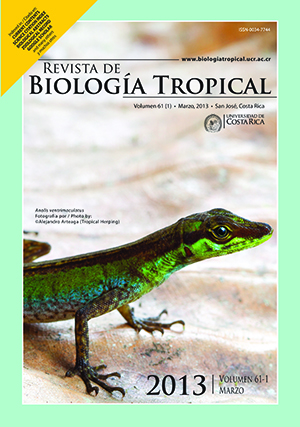Abstract
The brachyuran crabs are iteroparous species which present a high diversification of reproduction patterns, which may have evolved as a species-specific response to environmental conditions. Tropical species commonly present a year-round reproduction due to stable environment conditions. Goniopsis cruentata is a crab species widely distributed along the Western Atlantic, inhabiting practically every microhabitat in the mangrove ecosystem. The aim of the present study is to determine the breeding period of the crab Goniopsis cruentata in Northeastern Brazil and also to evaluate the influence of water salinity, rainfall and air and water temperature on it. A total of 71 ovigerous females, captured from August-2007 to July-2008, were used to assess the breeding period of this species. It was analyzed by the monthly proportion of ovigerous females. A correlation was applied to verify the influence of the abiotic factors on the breeding period. The present population bred seasonal-continuously with peaks in the dry period, which was not associated with monthly variations of salinity, rainfall and air and water temperatures. Therefore, according to statistical analyses, our hypothesis was refuted. However, breeding was intensified in the dry period, when salinity and temperatures were higher and rainfall was lower. We conclude that, even though breeding is not related to monthly variation of environmental factors, it occurs in periods of higher salinity and temperatures and lower rainfall.##plugins.facebook.comentarios##
Downloads
Download data is not yet available.






